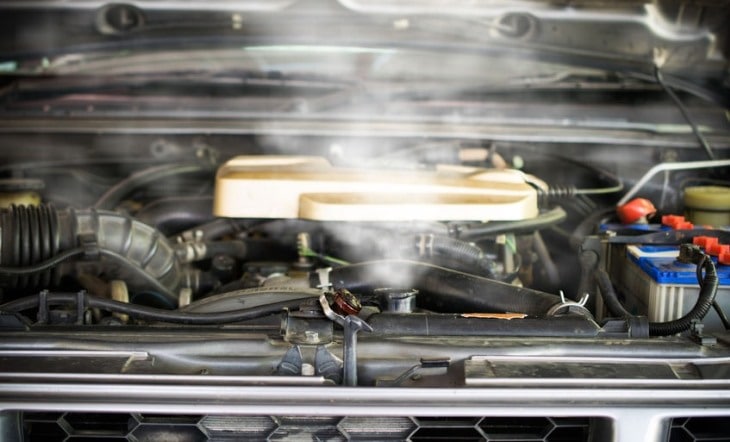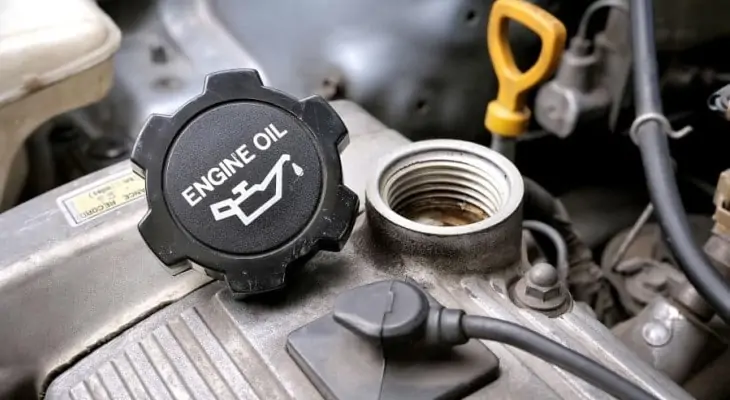Oil is a crucial component to your car’s engine! If that little oil light comes on, it is best to take care of it as soon as possible. Should you wait to add oil until the car is cool? What effects does the engine temperature have on the oil, anyway?
Oil can be added to an engine at just about any temperature. However, you run the risk of burns or smoke from any spills on a super hot engine. The engine temperature also affects the viscosity of the oil and may result in an inaccurate oil level reading. It is best to allow the engine to cool for 10-15 minutes before you add oil.
Table of Contents
Can You Add Oil to the Engine When It Is Hot?

Technically, you can add oil to your engine while it is hot. A hot engine also heats up the oil. Warm oil takes on a thin consistency, so it may be more difficult to accurately add oil. You run the risk of overflowing or underfilling the oil.
However, if the engine is very hot when you add oil, you risk smoke or even a fire if you are not careful! A spill could legit result in a fire. You also risk a burn to your skin from the engine or dripping hot oil from the dipstick.
How Does Engine Temperature Affect Oil?
The engine temperature affects the viscosity or thickness of the oil. The higher the temperature, the thinner the oil. This won’t hurt the engine, but it may make it more difficult to determine the oil level in the engine.
On the other hand, cold oil can become very thick. During really cold weather, warm up the car’s engine for 15-20 minutes, turn it off, then add the oil.
It is normal for oil to expand and contract, depending on the temperature of the engine compartment. Synthetic oils are more likely to contract when it is cold and expand when it is hot.
How Long Should the Engine Cool Before Adding OIl?
It is best to allow the engine to cool for at least 10-15 minutes before adding oil. This time period will prevent burns from the hot oil, and allow the oil to maintain a consistent viscosity when you check the oil level.
Why Does the Engine Need Oil?
Oil is very important to the life of your vehicle! It is important to maintain consistent oil levels as suggested by the vehicle manufacturer. The oil plays a crucial role in keeping the engine running smoothly.
Lubrication
There are a lot of moving parts in an engine! All those moving parts need proper lubrication. Additionally, as the car runs, bits of dirt and soot can gather in the engine and block parts of the engine. Most oils contain a detergent component that cleans away the residue and keeps blockages from occurring.
Cooling
A car engine can get up to 220 degrees Fahrenheit. The oil helps keep things cool. The oil is continuously pumped through the engine with the oil pump. The circulation of the oil helps keep the oil temperature stable, thus, preventing the temperature of the engine from getting too high.
How Do You Know If You Need to Add Oil or Change It?

It is important to get the oil changed regularly. As the oil circulates throughout your engine, it picks up dirt and soot. Eventually, the oil gets too dirty to work effectively. It is also important to maintain the oil level recommended by the car manufacturer.
Check the Oil Level:
- Park the car on a level surface: Oil is a liquid. A car parked on a hill will have an inconsistent oil level reading.
- Allow the car to cool for 10-15 minutes.
- Open the hood and locate the dipstick: The dipstick should have a red or orange tab on the end so you can spot it easily.
- Remove the dipstick and wipe it clean: Use a clean cloth to remove existing oil residue.
- Reinsert the dipstick: Wait a few seconds to allow the oil to adhere to the dipstick.
- Check the oil level: The oil level should fall somewhere in between the minimum and maximum lines on the dipstick, but never over the maximum line.
Adding More Oil
If the oil level is below the minimum line, add a small amount of oil to the cooled engine. Repeat the process above to recheck the oil levels. If the oil is still low, keep adding oil and checking frequently until the oil level is at the optimum level.
When to Change the Oil
Modern cars use oil more efficiently and can go 5,000-7,000 miles in between oil changes. Most vehicles have an indicator on the dashboard to tell you when it is time for an oil change. Check your vehicle manual.

